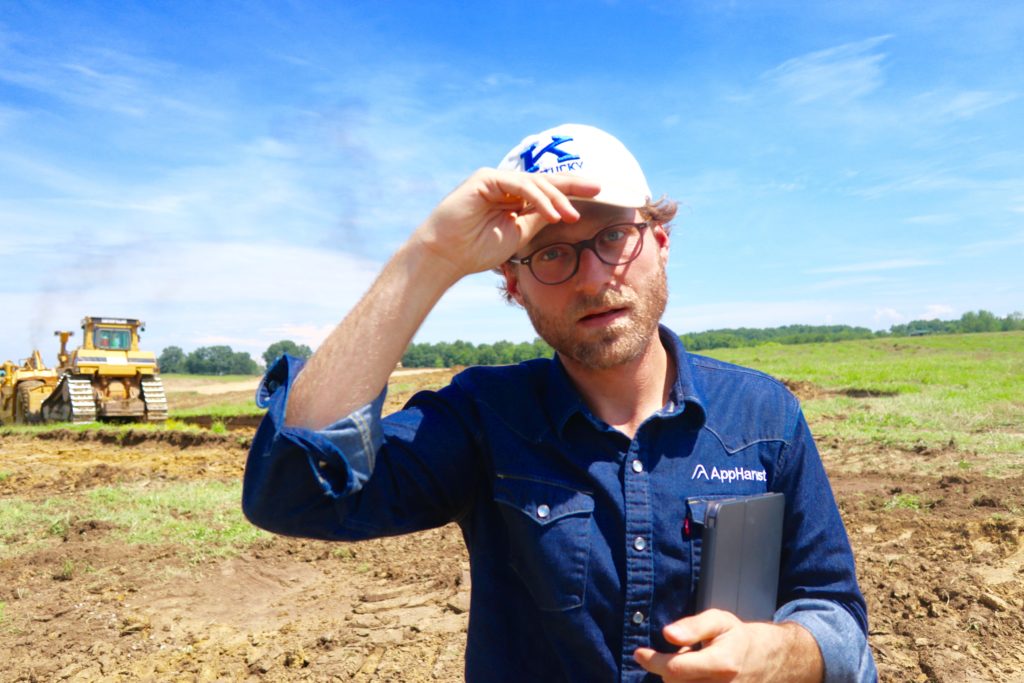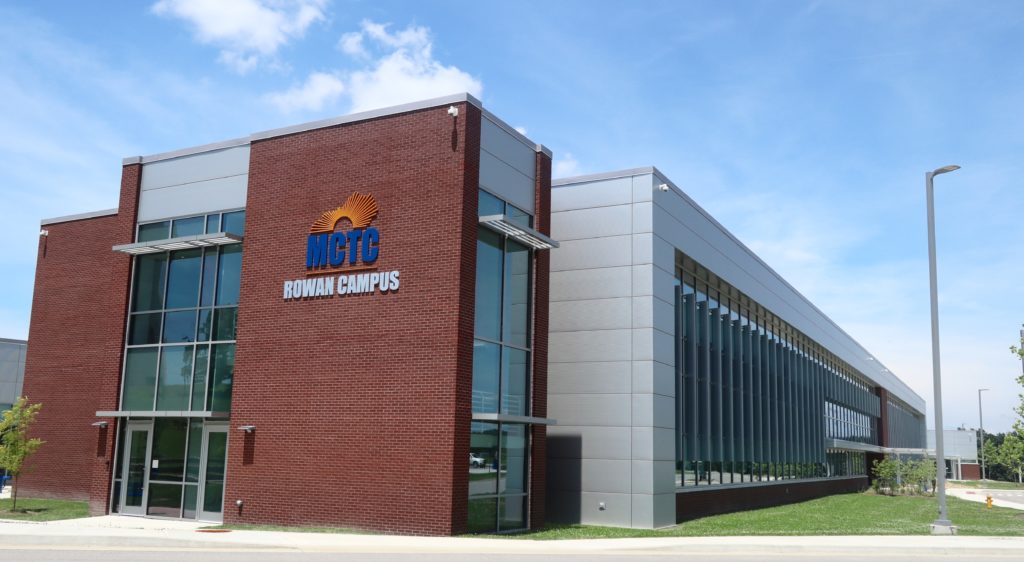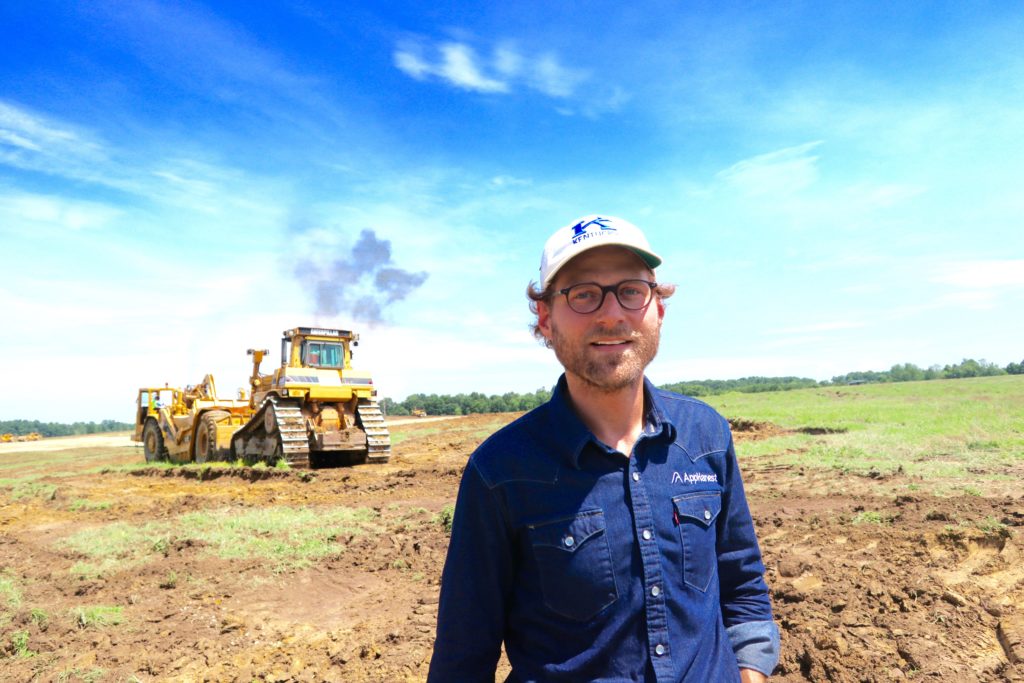
MOREHEAD, Ky. – Almost 70 percent of American consumers, including those who love fresh tomatoes, are a day’s drive from eastern Kentucky. That proximity to big markets is the primary reason AppHarvest is building the largest greenhouse in the United States in a big field in Rowan County just outside this university town.
Sometime next summer, when production commences, the $97 million, 60-acre building will begin shipping 45 million pounds of fresh produce annually, primarily tomatoes, to grocery stores from Atlanta to New York, and as far west as Chicago and St. Louis.
“I asked the engineers, ‘How big can we possibly be to operate efficiently and effectively,’†said Jonathan Webb, AppHarvest’s 34-year-old founder and chief executive. The 2.76-million square foot building, now being constructed on a 366-acre field close to Interstate 64, is big enough to lower costs on materials, production, and distribution. “It’s price per pound. We have to compete with produce coming from 2,000 miles away.â€
I learned about Kentucky’s AppHarvest project last spring and visited with Jonathan Webb and his colleagues in late June for this story in the New York Times. If Webb succeeds he and his staff will do more than produce enough vegetables to help feed the East Coast. He’ll change the economic vector of a state that has a $5 billion farm sector, but has been associated historically to horses and tobacco, and for that matter to the failing coal sector. In food there is salvation.
The mammoth project, undertaken by the two-year-old Kentucky start-up, weds Dutch greenhouse technology to rising demand for American-grown tomatoes, an appetite that has climbed to 20-plus pounds per person, second only to potatoes. With its digital monitoring, sun and LED-lit environment, recycled rainwater, and non-chemical growing practices, the immense greenhouse also responds to a host of cultural concerns about food safety, freshness, environmental quality and energy consumption.
Other food growers have the same idea. AppHarvest, which will employ 285 people, is part of a wave of new greenhouse construction changing vegetable production in the eastern U.S.
More Greenhouse Development
Kentucky Fresh Harvest is building a 30-acre, $13.5 million greenhouse to grow cherry tomatoes near Stanford, also in Kentucky, about 100 miles southeast of Morehead. Mucci Farms, a Canadian company, just opened the first of three large greenhouses for tomato production on a 75-acre farm in Huron, Ohio. Mastronardi Produce last year finjshed a 20-acre greenhouse for vegetables in Wapakoneta, Ohio. The Canadian company operates six others in Ohio, Michigan and New York.
AppHarvest is intent on meeting the rising demand for fresh tomatoes in a market increasingly supplied by imports from Mexico and Canada.
The two countries account for more than half of the $3 billion American fresh tomato market. The U.S. Department of Agriculture says U.S. production, meanwhile, is declining. Fresh tomato growing in Florida, a major producer, has fallen to around 30,000 acres, down from 39,400 acres at the start of the century, according to the U.S.D.A. Similar reductions have occurred in California, North Carolina, and other tomato suppliers.

AppHarvest’s founder also is intent of leveraging his big greenhouse to promote two other transformative ideas. The first is to build huge AppHarvest greenhouses in other eastern Kentucky communities. The second, he says, is to be so successful that other greenhouse growers settle in eastern Kentucky, enough to replace an economy devastated by the collapse of the coal industry with a “sustainable produce hub†that would turn Kentucky into “the agtech capitol†of America.
That goal is achievable. Greenhouses provide a controlled environment that allows vegetables to be grown year-round. The U.S.D.A., in a report published in March, said greenhouse tomatoes in 2017, the latest year for accurate figures, accounted for 32 percent of the domestic supply. The same year, according to the USDA, Kentucky farmers grew tomatoes in 1.1 million square feet of greenhouses on more than 300 farms.
“It’s not going to be just AppHarvest,†said Mr. Webb, who was raised in nearby Lexington. “The whole region will be lit up with vibrancy and excitement. The same thing you see in New York and San Francisco.â€
Mr. Webb’s vision, and his skill in selling it, attracted robust support from the state, venture capitalists, vegetable marketers, and from Dutch greenhouse and electronics manufacturers. It’s all come together very quickly.
In May, Mr. Webb convinced the managers of Equilibrium Capital’s Controlled Environment Foods Fund to finance the greenhouse construction, a total of $97 million to date, and could increase to over $100 million. He raised millions more – the precise amount is held in private – from the ValueAct Spring Fund and from Revolution’s Rise of the Rest Seed Fund to finance the company’s engineering, administration, staff, and start-up operations.
“We just believed no matter what obstacles came up with App Harvest, this is the guy who could get it done,†said J.D. Vance, author of “Hillbilly Elegy†and managing partner of Rise of The Rest, a $150 million fund established in 2017 by Steve Case, co-founder of AOL. “You want to invest in people who won’t run away at the first sign of trouble.â€
Kentucky invested $1.9 million in a new road and other infrastructure. “That area used to be tobacco,†said Ryan Quarles, commissioner of the state Department of Agriculture. “It’s an area now that’s eager for new technology. We like his vision.â€
A Visionary
Mr. Webb, son of a Kentucky machinery dealer, said he always planned to build something big in Kentucky. He just hadn’t decided in what industry.
After graduating from the University of Kentucky in 2007, he settled in New York City for two years. A friend who attended Columbia University suggested that he attend a business school class on sustainable economy. Though he wasn’t a paying student, Mr. Webb listened at the back of the class for a semester and learned the language of renewable energy and the principle companies in the sector. He was drawn to the industry’s goal to outcompete fossil energy sources for electricity and help solve climate change.
Mr. Webb talked himself into a job with a contractor who developed solar energy installations for the Army’s Office of Energy Initiatives. He eventually moved to the Washington area and joined the office as an executive charged with managing construction of solar installations on three Army bases in Georgia.
The experience provided Mr. Webb with essential knowledge about how to market big industrial installations and coordinate the myriad steps in permitting, materials, staff, and construction. One of his colleagues at the Army office was Matt Gosnell, a friend and also a University of Kentucky graduate, whom Mr. Webb recruited to be AppHarvest’s vice president of development.
While in Washington, Mr. Webb surfed the Internet for ideas about what to build in Kentucky. Mr. Gosnell recalls stopping by his friend’s apartment one day near midnight in 2016 when Mr. Webb first mentioned the idea of building a huge greenhouse that produced tomatoes. They talked about Kentucky’s abundance of land and water, the same resources that had attracted industry to the Ohio River Valley for over 200 years. They talked about how close eastern Kentucky is to major markets.
Mr. Webb was characteristically confident. Mr. Gosnell had questions. “I remember thinking how many tomatoes do you have to sell to build a facility of this size,†he said.
It turns out AppHarvest has to sell a lot of tomatoes at the current wholesale price of about 70 to 80 cents a pound.
Mr. Webb is certain the company can reach its annual goal of 45 million pounds annually. He’s sought partners on two continents.

AppHarvest’s crop will be distributed exclusively by Mastronardi Produce. The greenhouse was designed and built by Dalsem, a family-owned company founded in the Netherlands in 1932 that has supplied greenhouses for vegetable and flower production to 52 countries. The agreement to build AppHarvest’s facility, the largest greenhouse Dalsem ever manufactured, prompted top Dutch government officials to attend the signing ceremony earlier this year.
In July, AppHarvest signed a $15 million contract with Philips, the Dutch electronics company, for the LED system that will provide optimal lighting conditions for maximum plant growth. At night, App Harvest’s 366-acre field, surrounded by Rowan County’s dark forested landscape, will glow like a bright glass city. The company is negotiating with Eastern Kentucky Power to supply the greenhouse with electricity generated by solar installations.
AppHarvest also is applying advanced cultivation practices. All of its irrigation water — 360,000 gallons a day — will be supplied by rain collected from the greenhouse roof that drains into a 10-acre pond capable of storing almost 46 million gallons, or a three-month supply in case of drought. All of the water will be recycled and there will be no discharges into streams or groundwater. The company will add nutrients directed straight to the roots of plants raised in charcoal beds.
AppHarvest will control pests and diseases with non-chemical, biological methods. For instance, two species of tiny wasps, encarsia formosa and eretmocerus eremicus, will be introduced to control white flies, a nemesis of greenhouse production.
“It was critical for me to have that Army experience building solar plants,†said Mr. Webb. It gave him the credibility to convince investors that greenhouse tomatoes was the right idea and eastern Kentucky was the right place. “Here we are,†he said, “a $97 million dollar greenhouse in Morehead. Hot damn!â€
— Keith Schneider


What a great post!